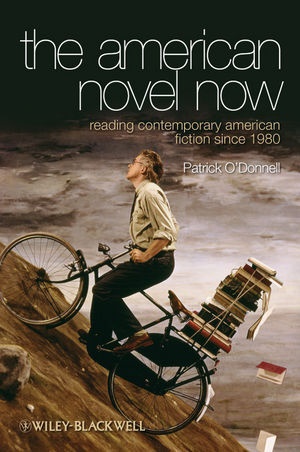Read more
Informationen zum Autor Patrick O'Donnell is Professor of English and American Literature at Michigan State University, where he served as department chair from 1997 to 2007. He has written and edited a number of books and collections on contemporary American fiction and film, including Latent Destinies: Cultural Paranoia in Contemporary U.S. Fiction (2000), Echo Chambers: Figuring Voice in Modern Narrative (1992), Passionate Doubts: Designs of Interpretation in Contemporary American Fiction (1986), and New Essays on The Crying of Lot 49 (edited, 1991). He is an associate editor of The Columbia History of the American Novel (1991), a former editor of Modern Fiction Studies, and a co-editor of The Encyclopedia of Twentieth Century American Fiction (forthcoming from Wiley-Blackwell). Klappentext Contemporary American fiction since 1980 is known for its remarkable liveliness, diversity, and rigor. The American Novel Now navigates this exciting and vast terrain, offering a symptomatic reading of contemporary American fiction that considers both mainstream and experimental writing from over seventy different authors and novels. Featured authors include Toni Morrison, Thomas Pynchon, Louise Erdrich, Don DeLillo, Richard Powers, Kathy Acker, and many more.Written in a lively and accessible style, the book explores a wide range of themes offered in the wealth of contemporary American fiction, including identity, history, family, nation, and aesthetics, as well as cultural movements, styles, and narrative strategies. The American Novel Now provides an excellent guide for those who wish to be introduced to the contexts, vitality, and diversity of the contemporary American novel over the last thirty years. Zusammenfassung Written in a lively and accessible style, the book explores a wide range of themes offered in the wealth of contemporary American fiction, including identity, history, family, nation, and aesthetics, as well as cultural movements, styles, and narrative strategies. Inhaltsverzeichnis Preface.Acknowledgements.Part I: Before 1980.Part II: From New Realisms to Postmodernism.Part III: Becoming Identities.Part IV: What Happened to History?Part V: Relations Stopping Nowhere.Epilogue.Notes.References.Index....
List of contents
Preface.
Acknowledgements.
Part I: Before 1980.
Part II: From New Realisms to Postmodernism.
Part III: Becoming Identities.
Part IV: What Happened to History?
Part V: Relations Stopping Nowhere.
Epilogue.
Notes.
References.
Index.
Report
"In this extremely accessible discussion, O Donnell (Michigan State Univ.) reveals his as an authoritative voice on novels from the 1980s to present. His selections are, by his own admission, eclectic: he writes in the introduction that he "chose to discuss, where appropriate, both widely read novels published by the mainstream commercial presses and less visible, often experimental work published by independent presses." He looks at work from more than 70 authors, including central figures of the American literary canon--Toni Morrison, Thomas Pynchon, Louise Erdrich, and Don DeLillo, to name only a few. O Donnell divides the book (and his approach) into five distinctive parts, discussing, respectively, work leading to the 1980s; realism and experimentation; identity, as it pertains to character--gender, ethnicity, and so on; historicity and "end times"; and social emergence within the novel. All this leads to an intriguing "excursus that speculates on the future of the novel." This is a comprehensive discussion of the novel and present circumstances influencing it--an interesting study on many levels." (CHOICE, December 2010)
"The American Novel Now provides an accessible introduction to the many strands of post-1980 American fiction." ( TLS, June 2010)

